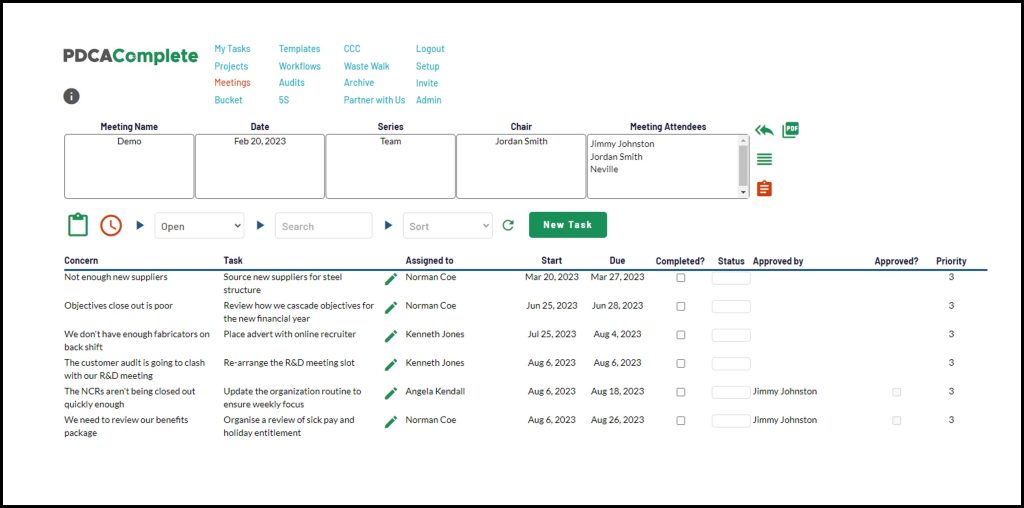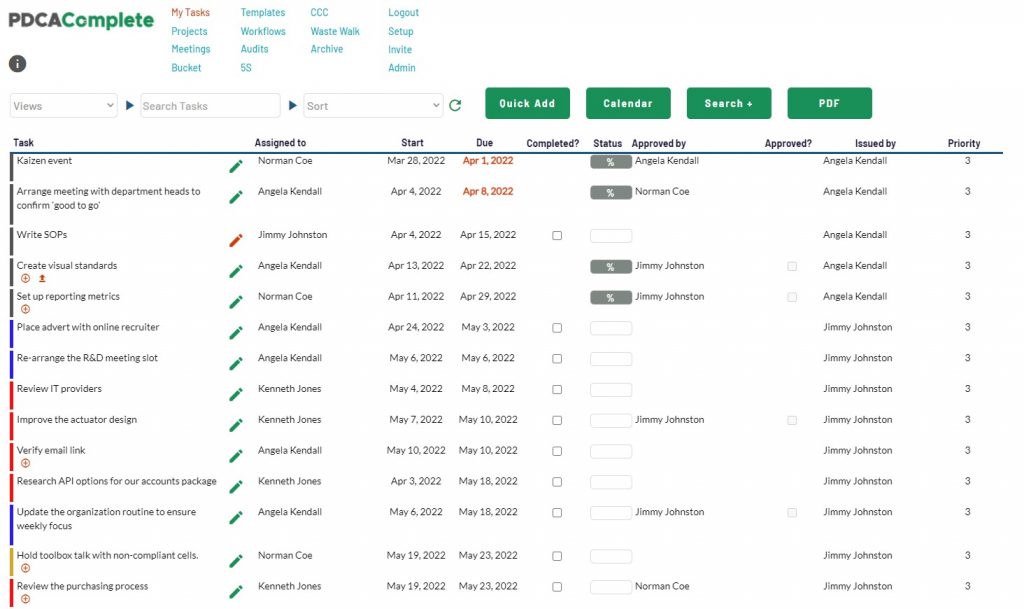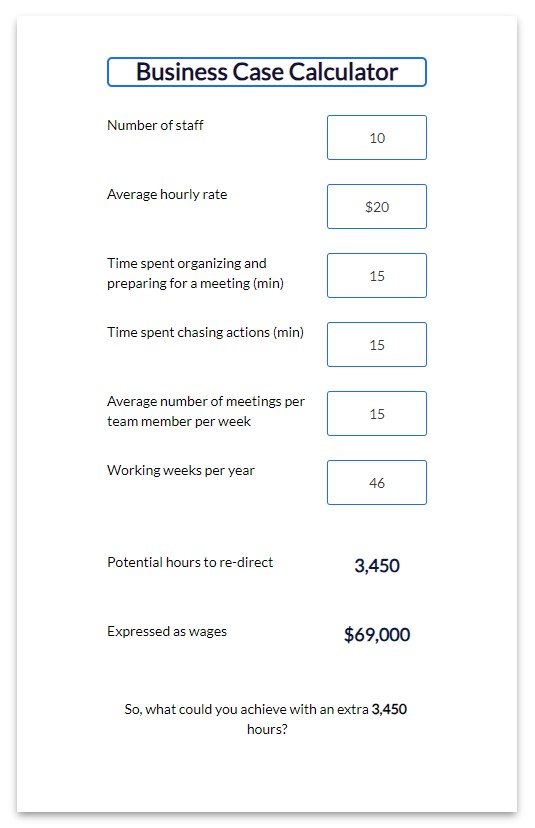Many work teams capture notes from their meetings. Some use notebooks, some use e-ink tablets… they come in all shapes and sizes! There are some downsides to using individual methods like these. The focus of this article is to look at joined up approaches, such as PDCA Complete.
The quality of notes
Capturing notes can be an artform. We very rarely give training to our staff in the art of good note taking. Often we capture actions but don’t agree on deadlines. Sometimes there is a lack of clarity and notes may not make sense at a later date.
The quality of the notes you take really can affect the quality of the actions. If you don’t have clarity when you take the note, reviewing it weeks later can be a mammoth effort.
Capturing notes is good practice
Before I say anything more on this, I need to stress that having some notes are often better than no notes. I still see too many people trying to memorise all the tasks assigned to them during meetings.
This is a poor strategy and I think you can guess what their hit rate is for closing their tasks down…
Writing down what you discuss and agree during a meeting can save your sanity too! If you don’t have to try and keep everything moving inside your head, you feel better. You can relax, knowing that you have it under control and documented elsewhere. Don’t rely on your memory!
The drawbacks of using individual notebooks
So, why am I being so hard on the individual approach, bearing in mind the last couple of paragraphs? Well, there are a few limitations that can really impair a team:
Difficult to review
Let’s say that you have five team members, each recording their own notes. When will you sit down together and go through each set of notes to make sure that all tasks are complete?
It takes too much time.
Sharing with the team
When you come back to the quality of note taking element, what about sharing with your team? If the person recording the notes isn’t detailed enough, the output can be unusable.
Also, if one person is recording the notes, then they need to circulate with the team. Often this takes place after the meeting and can take anywhere from a few minutes after the meeting to weeks…
Chasing of separate team members
What about following up the actions? Does this need to be a separate meeting?
If you are utilizing separate notebooks, managing the action list is time consuming.
Too many meetings start with attendees trying to figure out what they haven’t done. This is before they waste time in the meeting waffling on!
Separate notes – lack of continuity
When you have several individual records, you get several different perspectives.
When you join the recording process together, you get one place to capture your records. You get one place for what happened and what you agreed. It makes life so much easier and requires less effort on the team’s part.
Enter PDCA Complete
We built our system to cope with the above. We’re always amazed at the stories we hear about how people record their meetings…
Let me tell you about two of our core functions.
Meetings
One of our key tools it the meeting function. Create a meeting, add the attendees and then add records as a team. Capture the decisions reached and the actions agreed. Assign responsibilities, opt for task approval if you need it. Pick a deadline and save the record. Done.
Multiple people can work on the meeting records at once, to save time and effort.
After the meeting you have a record of the meeting’s decisions and actions. This is a low effort approach. You can also create meeting series to chain action plans together. This allows for a quick review of previous meeting actions.
My Tasks
At the center of PDCA Complete is the My Tasks function. All tasks flow here that relate to you. Your tasks, the tasks you have assigned, the tasks you need to approve.
After the meeting all your tasks will be here. No more waiting for the next meeting to ‘wing it’ and try and clear off your actions. Use the filters, dice up the tasks and make progress every day.
You can also add notes to the tasks, upload files and state progress. All the tools you need to help move tasks along to completion.
Payback calculator
So much time is wasted around meeting preparation, documentation and chasing up. We created a calculator to help you visualize what is costs your business. You can have a look at it here.
Input your team size and figure out how much time and money you can save by using PDCA Complete.
Free subscription
To help you get started we offer a free subscription. Sign up, add in two team members and see how quick PDCA Complete is to learn.
If you need to expand the team, upgrade to a paid subscription and move up a gear. Team members don’t have to be in your business. You can add in business partners, consultants and contractors.
To get started, you can sign up here.



